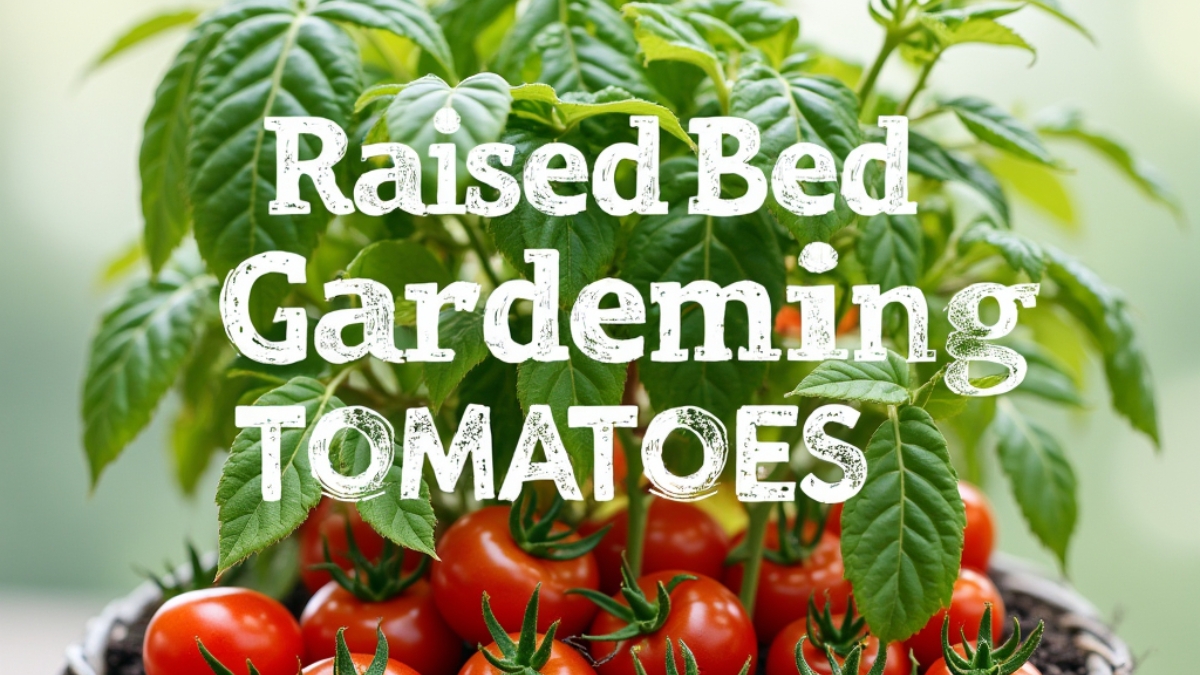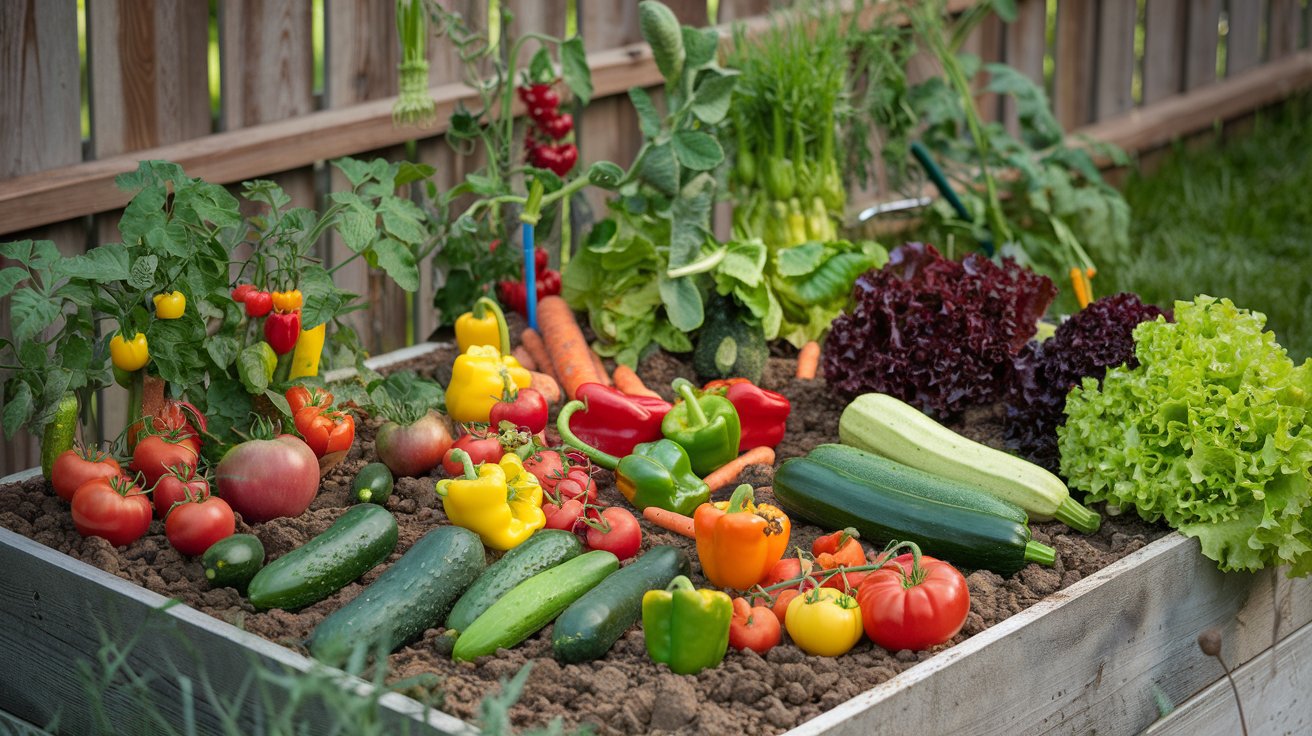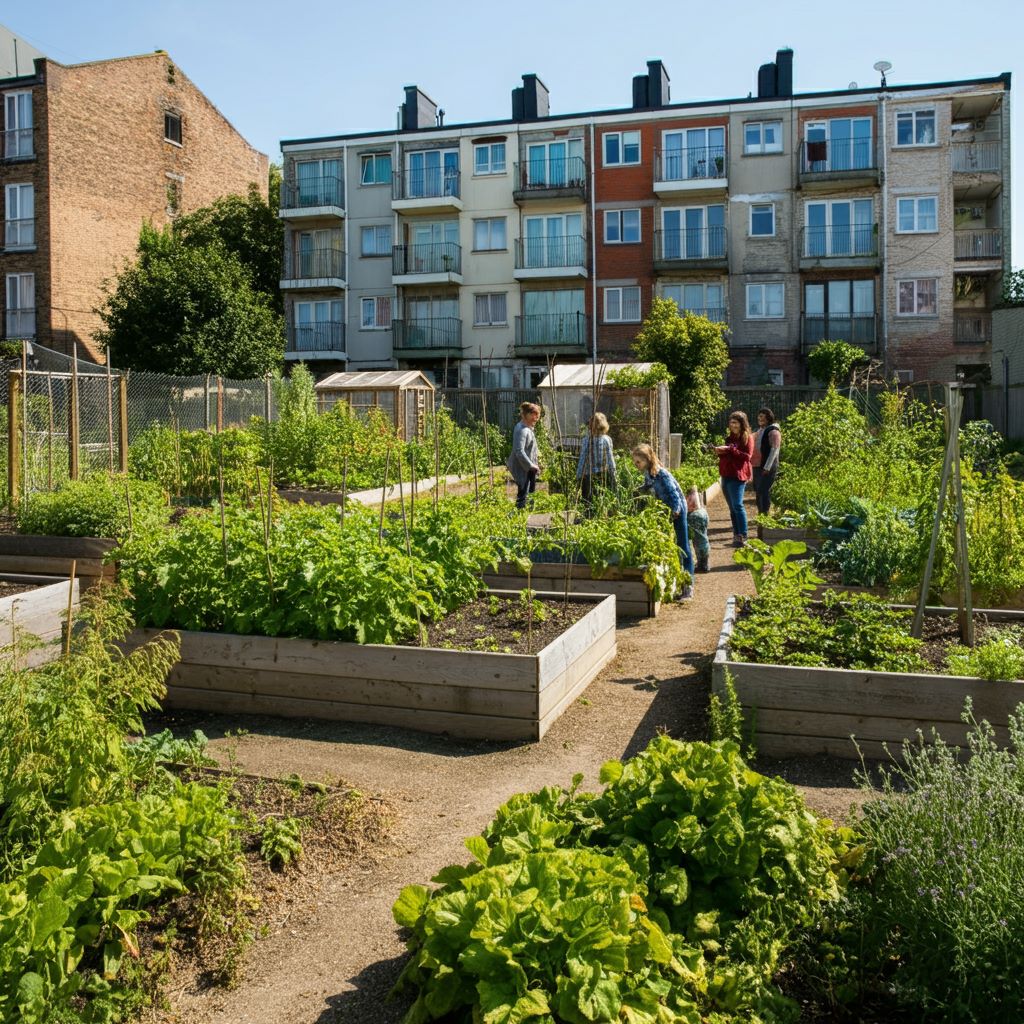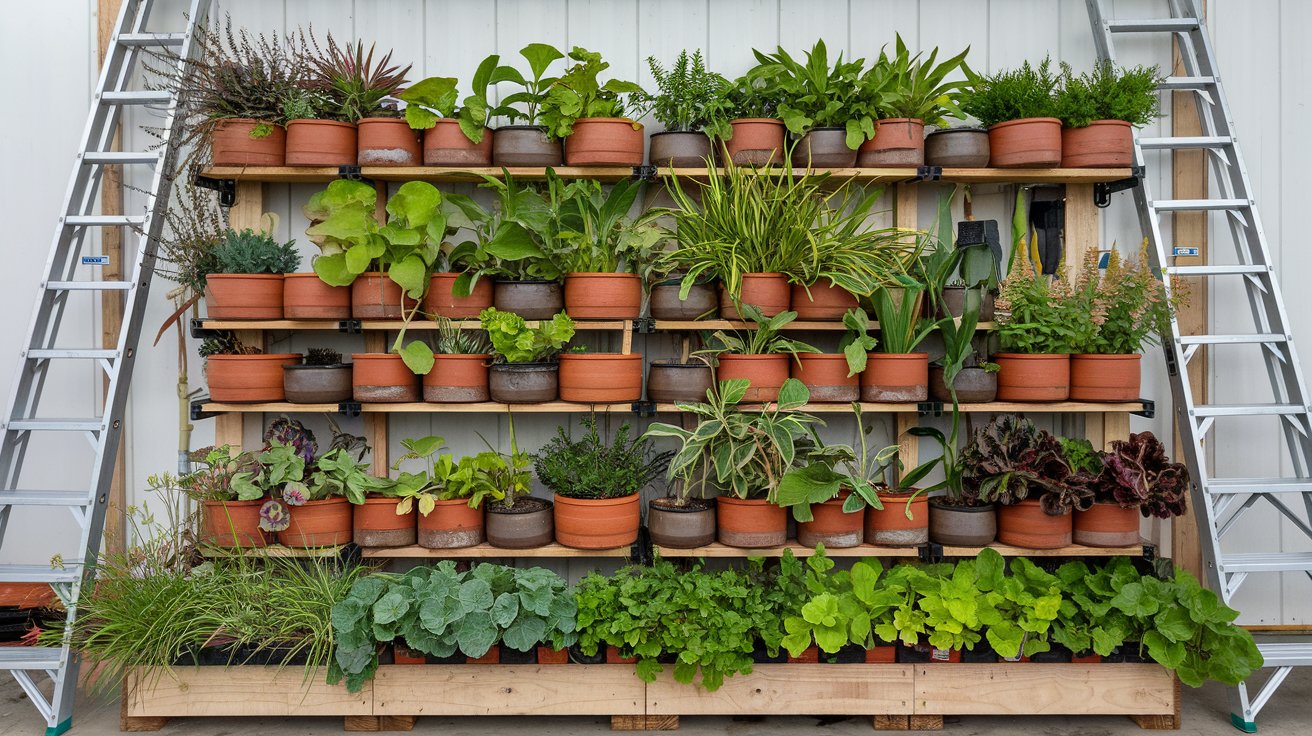Tomatoes are one of the most satisfying crops for home gardeners—rich in flavor, versatile in the kitchen, and visually rewarding. Yet many beginners struggle with inconsistent growth, pests, or space limitations. Enter raised bed gardening—a solution that not only enhances productivity but also simplifies your overall landscape maintenance.
By combining easy upkeep landscaping ideas with strategic tomato-growing techniques, even urban gardeners with limited experience can yield a season-long supply of juicy tomatoes. This guide shares ten in-depth, field-tested tips for mastering tomatoes in raised beds, backed by real-world examples, expert insights, and professional garden design principles.
Key Takeaways
Table of Contents
Why Raised Beds Work Wonders for Tomatoes
Raised beds are a game-changer for growing tomatoes, especially for those working in small or urban spaces. Unlike in-ground planting, raised beds give you full control over the soil, structure, and environment, allowing you to overcome the challenges of poor native soil or compact spaces. This method helps manage moisture better, improves root growth, and simplifies maintenance—a key aspect of easy upkeep landscaping ideas.
For instance, a study from the University of Arizona Extension revealed that raised beds could warm up to 8°F faster in spring than ground soil. This early warmth accelerates tomato growth, making raised beds ideal for jumpstarting the season. Urban growers in New York City’s GreenThumb community gardens also report that their tomato harvests increased by 25–30% when switching to raised beds, thanks to fewer drainage issues and improved pest control.
Raised beds also minimize compaction since you never walk on the soil, which helps roots breathe better. The elevation keeps pests like slugs and ground beetles at bay while making it easier to install protective elements like hoops, covers, or cages. Plus, for those with physical limitations, the ergonomic benefits of raised beds make gardening more accessible and enjoyable.
Understanding the Ideal Depth for Raised Beds
When it comes to growing tomatoes in raised beds, depth matters more than you might think. Tomatoes are deep-rooted plants, and insufficient soil depth can stunt their growth, reduce yields, and make them more susceptible to drought stress. So, how deep should your raised bed be?
The general rule is that 12 inches is the minimum depth you should aim for, but 18 to 24 inches is considered optimal—especially for indeterminate (vining) tomato varieties. Determinate (bush) tomatoes can thrive in shallower beds, but the extra depth ensures the roots have enough room to spread and anchor the plant.
Here’s a quick comparison of tomato types and ideal depths:
Tomato Type | Minimum Depth | Recommended Depth |
Determinate (Bush) | 12 inches | 18 inches |
Indeterminate (Vining) | 18 inches | 24 inches |
In real-world applications, raised beds built to 24 inches deep—like those used in Denver’s Sprout City Farms—have shown more resilience during heatwaves due to the increased moisture retention in the soil. Plus, deeper beds allow for easier layering of compost, mulch, and organic matter, which directly benefits the long-term health of your tomato plants.
For added depth without added materials, you can double-dig the base or loosen the native soil beneath the bed, effectively extending the root zone vertically. This is particularly helpful in small backyard spaces or rooftop gardens where vertical growth can be prioritized.
Crafting the Perfect Soil Mix for Raised Bed Tomatoes
Soil is the soul of your garden. In raised beds, it’s not just about what you grow—it’s about what you grow in. Because raised beds allow you to create a custom soil blend, they offer the perfect opportunity to optimize for tomato productivity. But what should that mix look like?
Tomatoes thrive in nutrient-rich, well-draining, slightly acidic soil (pH 6.0 to 6.8). A foundational mix often used by successful raised bed gardeners includes 40% compost, 30% coconut coir or peat moss, and 30% perlite or vermiculite. This ensures good water retention while keeping the soil light and aerated.
But what really elevates this blend are the additions: worm castings, aged manure, and mycorrhizal fungi. These natural amendments add not just nutrients but living biology to your soil. Gardeners in California’s Edible Schoolyard project found that using homemade compost and worm castings led to visibly more vigorous tomato growth and larger fruit size within one season.
To maintain soil fertility across seasons, use crop rotation or cover crops during off months. Tomatoes are heavy feeders and will deplete the soil of nitrogen and potassium if left unchecked. Consider adding bone meal for strong roots and flowering or seaweed extract to boost fruit set naturally.
Strategic Spacing in Raised Beds: Why It Matters
Plant spacing in a raised bed isn’t just about cramming in as many tomatoes as possible—it’s about airflow, disease prevention, and maximizing sunlight. Poor spacing can result in fungal infections, leaf blight, or poor fruit set due to inadequate light penetration.
The type of tomato you grow determines how much space it needs. Determinate tomatoes are bushy and compact, usually topping out around 2-3 feet tall. These need about 18–24 inches between plants. Indeterminate types can grow over 6 feet tall and should be spaced at least 24–36 inches apart.
Tomato Variety | Spacing Recommendation |
Bush (Determinate) | 18–24 inches apart |
Vining (Indeterminate) | 24–36 inches apart |
A common layout technique used by Square Foot Gardening enthusiasts is to alternate tomato plants in a checkerboard fashion or along the bed’s centerline, which ensures each plant has optimal access to sun and air. This method also allows space for companion plants, which can contribute to soil health and pest resistance.
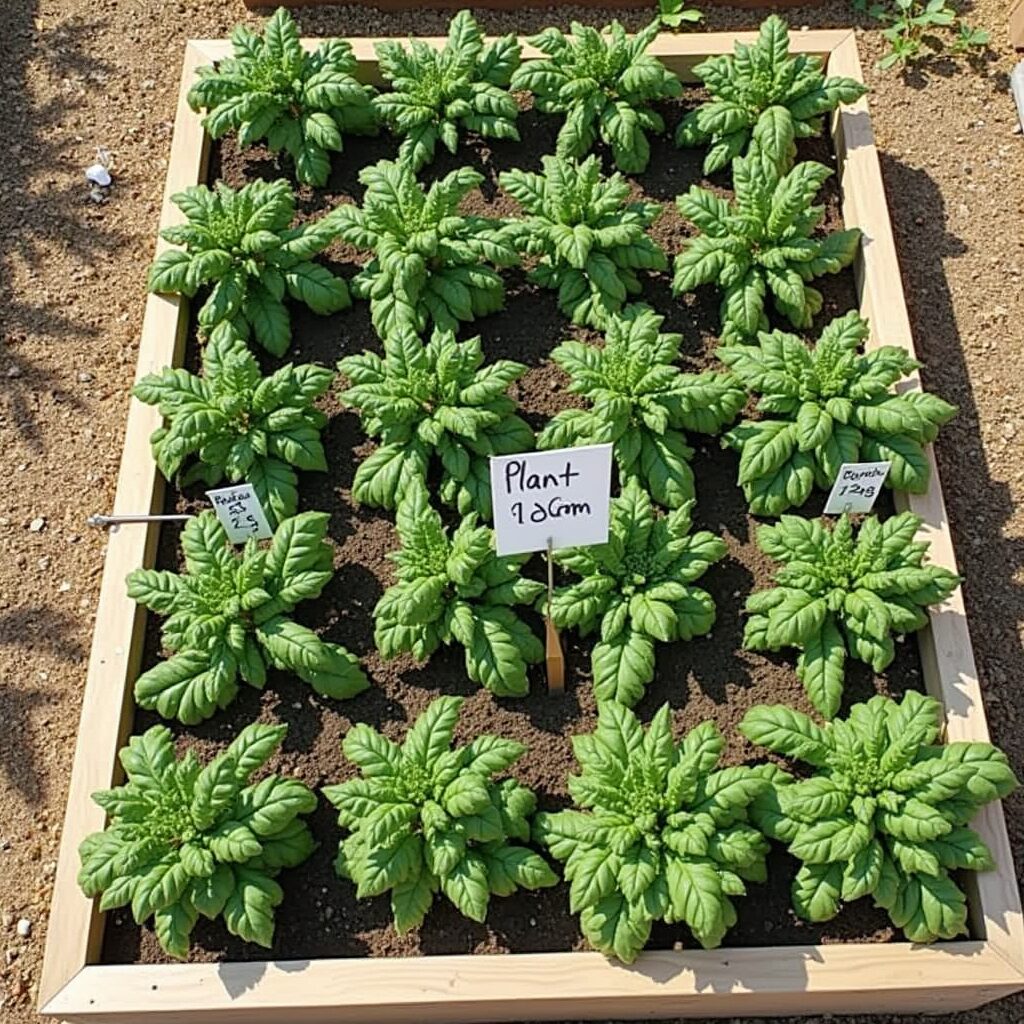
Choosing the Best Tomato Varieties for Raised Beds
Not all tomato varieties are created equal—especially when space is tight. For raised beds, it’s essential to pick cultivars that suit your climate, growth habits, and taste preferences. Small or compact plants are generally more manageable, while disease resistance is a bonus for beginners.
Top-performing varieties for raised beds include:
Gardeners in the Pacific Northwest love ‘Sun Gold’ for its resilience in cooler, cloudier summers, while those in hotter zones favor ‘Roma VF’ for its drought tolerance and minimal splitting. Don’t be afraid to experiment with heirlooms like ‘Black Krim’ if you’re up for a challenge—they can reward you with complex, rich flavors.
Raised Bed Garden Layout and Tomato Companions
Designing your raised bed layout with both structure and synergy in mind can significantly improve the health and productivity of your tomato crop. The strategic positioning of tomato plants alongside beneficial companions not only maximizes space but also helps in deterring pests and enriching the soil.
Incorporating companion planting is a timeless technique supported by generations of gardeners and reinforced by organic farming institutions. For example, planting basil near tomatoes is known to enhance flavor and repel aphids. Marigolds deter nematodes and whiteflies, while chives and onions act as natural fungal deterrents. These plants serve as protectors and promoters of your tomato ecosystem.
Layout-wise, place your tallest tomato plants along the northern edge of your raised bed. This positioning prevents shading the rest of the bed and ensures your companion plants receive adequate sunlight. Use the central line of your bed for indeterminate varieties that require vertical support, and keep smaller companions around the edges for easy access and airflow.
Urban gardeners in Toronto’s rooftop farms have found great success using a grid layout where tomatoes anchor the structure while compact companions like lettuce or carrots utilize under-canopy space. The result is an efficient, high-yielding, and low-maintenance garden—hallmarks of easy upkeep landscaping ideas.
When designing your layout, also consider future maintenance needs. Leave a narrow pathway or mulch border for pruning, harvesting, and irrigating without disturbing the soil or damaging roots.
The Right Way to Fertilize and Water Tomatoes in Raised Beds
Tomatoes are heavy feeders with high moisture needs, but that doesn’t mean you should drench them daily or over-fertilize. Instead, adopt a thoughtful approach to feeding and watering, especially in raised beds where nutrients can leach out more quickly.
Start with a balanced, slow-release organic fertilizer when planting. As the season progresses, shift to a phosphorus-rich feed once flowering begins. Avoid overloading nitrogen in mid-season—it can produce lush leaves at the expense of fruit. Incorporating natural compost and aged manure into the soil mix helps maintain long-term fertility.
Watering is equally critical. The key to successful tomato watering is consistency. Irregular watering leads to blossom-end rot or cracked fruit. Aim for deep watering two to three times a week, depending on your climate and rainfall.
One of the best easy upkeep landscaping ideas for tomatoes is using drip irrigation. This system delivers water directly to the root zone, reducing evaporation and minimizing wet foliage—thereby lowering the risk of disease. Raised bed drip irrigation kits are affordable, easy to install, and customizable to your bed layout.
Here’s a sample watering and feeding guide:
Growth Stage | Fertilizer Type | Watering Frequency |
Transplanting | Fish emulsion or compost tea | Every 2–3 days (light water) |
Flowering | Organic 5-10-5 | 2x weekly (deep watering) |
Fruiting | Potassium-rich (e.g., kelp) | 3x weekly in hot weather |
Smart gardeners in Phoenix use this system in raised beds to handle the desert heat. The result? Thriving tomatoes with less effort and better yields.
Supporting and Pruning Tomatoes for Better Harvests
Tomato plants are vigorous growers, especially indeterminate varieties that can easily reach six feet or more. Without support, they become tangled messes prone to disease. In raised beds, where space is precious, supporting and pruning is essential.
Support structures keep plants upright, improve air circulation, and make harvesting easier. The most common options for raised beds include:
Each method has its pros. Cages are quick to set up but can be flimsy. Staking is space-efficient but requires regular tying. Trellises are excellent for visual appeal and long-term durability.
Once supported, pruning is your next line of defense. Remove suckers (small shoots between leaf branches and the main stem) to direct the plant’s energy toward fruiting. Prune the bottom 6–8 inches of leaves to avoid soil splash, which can introduce blight and mildew.
In Chicago’s Garfield Park Conservatory raised beds, gardeners use a modified “single-stem” trellis system for heirloom tomatoes. This allows vertical training, sunlight optimization, and fewer fungal issues—a testament to the value of structured support and routine pruning.
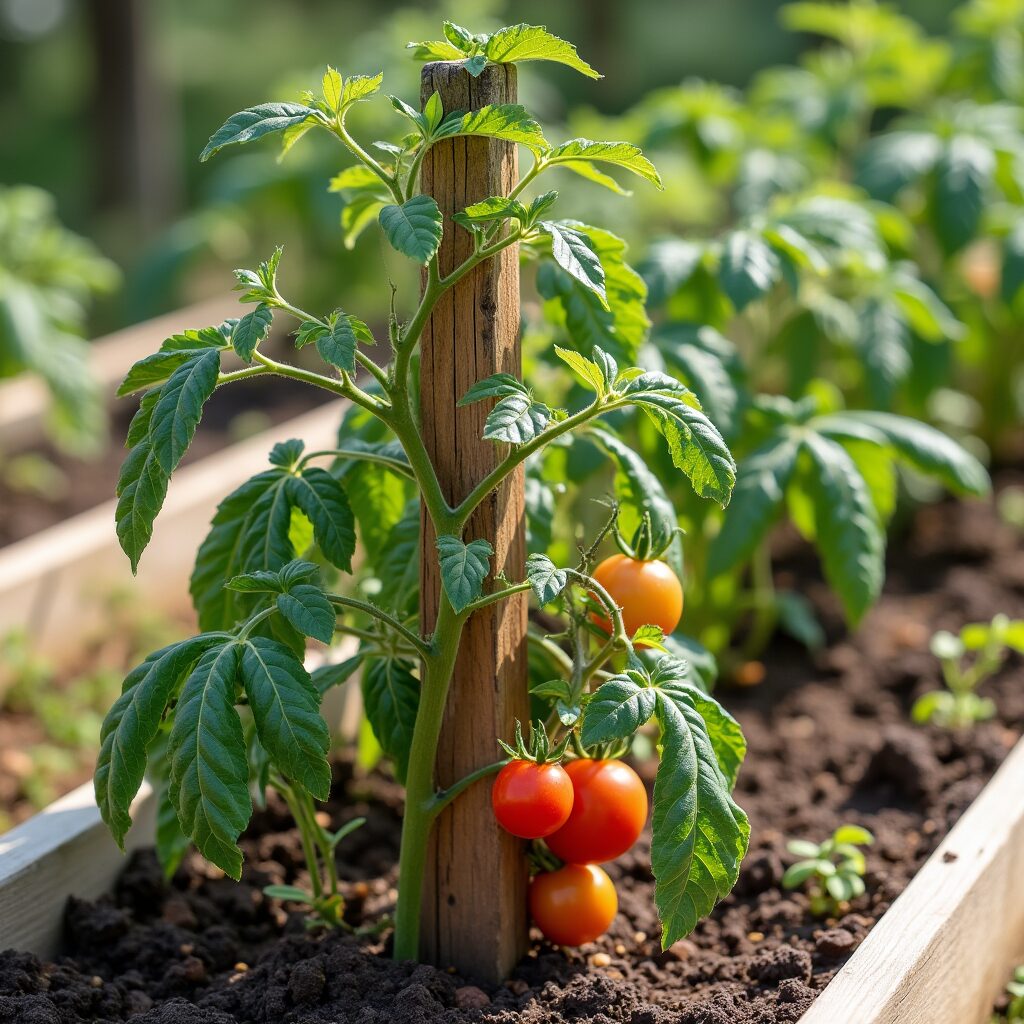
Solving Common Raised Bed Tomato Problems
Even the best-planned garden can face challenges. Fortunately, most raised bed tomato problems are solvable with early identification and proactive management. Here are a few common issues:
Real-world gardeners in Florida, where humidity breeds disease quickly, swear by proactive pruning and companion planting with calendula and nasturtiums to keep pests and mildew in check.
Use the table below as a troubleshooting cheat sheet:
Issue | Cause | Solution |
Blossom-End Rot | Calcium Deficiency | Lime, consistent watering |
Yellow Leaves | Nutrient Imbalance | Compost tea, check drainage |
Cracked Tomatoes | Irregular Watering | Mulch, drip irrigation |
Leaf Spots | Fungal Infection | Prune leaves, neem oil or copper spray |
Timing Your Tomato Planting in Raised Beds
Timing is everything when it comes to tomato success. Raised beds help extend the growing season, especially in cool climates, but you’ll still need to plant at the right time to avoid frost damage or heat stress.
For most gardeners, tomatoes should be transplanted outdoors when nighttime temperatures consistently stay above 50°F (10°C) and daytime temperatures range between 70–85°F (21–29°C). Raised beds warm up faster, so you might be able to plant a week earlier than in-ground growers.
Start seeds indoors 6–8 weeks before your last expected frost date. Harden them off gradually by placing them outside for a few hours daily over a week before transplanting. Early planting helps roots establish before pests and heat intensify.
Gardeners in zones 6–9 typically plant around mid-April to early May. In hotter zones like Arizona or Texas, you might plant as early as March to beat the summer heat. If you’re in a cooler area, consider adding a cold frame or row cover to your raised bed to protect young plants.
Conclusion
Raised bed gardening tomatoes doesn’t just offer convenience—it’s a masterclass in growing smarter, not harder. Whether you’re battling tight spaces, clay soil, or simply want a more manageable garden, raised beds offer structure, performance, and beauty. From choosing the right soil to smart watering systems, companion planting, and timely pruning, every tip shared here brings you one step closer to a bountiful tomato harvest.
By integrating these techniques with easy upkeep landscaping ideas, you can create a thriving mini-farm right in your backyard or on your patio, no matter your experience level.
Frequently Asked Questions
How deep should a raised bed be for tomatoes?
Tomatoes require ample root space to thrive. The minimum depth for a raised bed should be 12 inches, but 18 to 24 inches is ideal—especially for indeterminate (vining) tomato varieties that develop deeper root systems. Deeper beds allow for better drainage, improved moisture retention, and root expansion, all of which contribute to stronger, healthier plants and higher yields.
What is the best soil mix for tomatoes in raised beds?
The best soil mix for raised bed tomatoes is rich, well-draining, and nutrient-dense. A proven blend includes 40% compost, 30% peat moss or coconut coir, and 30% perlite or vermiculite. This mix offers excellent aeration and moisture retention. For enhanced performance, add worm castings, bone meal, and organic fertilizers like fish emulsion or kelp extract. Aim for a soil pH between 6.0 and 6.8 for optimal nutrient uptake.
How far apart should tomato plants be in a raised bed?
Proper spacing is essential to prevent overcrowding, improve air circulation, and reduce disease. Determinate (bush) tomatoes should be spaced 18 to 24 inches apart, while indeterminate (vining) varieties require 24 to 36 inches. If planting in rows, leave at least 30 inches between rows. This spacing allows light to penetrate, helps manage pruning and harvesting, and promotes healthier fruit development.
Do tomatoes grow better in raised beds?
Yes, tomatoes often perform better in raised beds due to improved soil conditions, better drainage, and faster warming in spring. Raised beds also reduce weed pressure and make it easier to manage watering and fertilization. Many urban gardeners report increased yields and fewer disease issues when growing tomatoes in raised beds compared to traditional in-ground methods.
What are the best tomato varieties for raised bed gardening?
Compact, disease-resistant, and early-maturing varieties are best for raised beds. Top picks include:
●Bush Early Girl – Fast and reliable.
●Roma VF – Great for sauces.
●Sun Gold – Sweet cherry tomato with high yields.
●Patio Princess – Dwarf variety ideal for containers.
●Celebrity – A versatile hybrid with disease resistance.
These varieties adapt well to the confined space of raised beds while delivering flavorful and abundant harvests.
How often should I water tomatoes in a raised garden bed?
Water tomatoes in raised beds deeply 2 to 3 times per week, depending on weather conditions. The key is consistency—avoid letting the soil dry out completely or become soggy. In hot climates, more frequent watering may be needed. Using drip irrigation or soaker hoses is a smart, low-maintenance way to ensure efficient water delivery directly to the root zone, helping prevent fungal diseases caused by wet foliage.

Robert Martin is a passionate blogger and versatile content creator exploring the intersections of personal finance, technology, lifestyle, and culture. With a strong background in financial literacy and entrepreneurship, he helps readers make smarter money moves, build sustainable side hustles, and achieve financial independence.
Beyond finance, Robert shares his insights on home decor and gardening—offering practical ideas for creating beautiful, functional living spaces that inspire comfort and creativity. He also dives into the dynamic worlds of sports and celebrity news, blending entertainment with thoughtful commentary on trends that shape today’s pop culture.
From decoding the latest fintech innovations to spotlighting everyday success stories, Robert delivers content that’s informative, relatable, and actionable. His mission is to empower readers to live well-rounded, financially confident lives while staying inspired, informed, and ahead of the curve.

